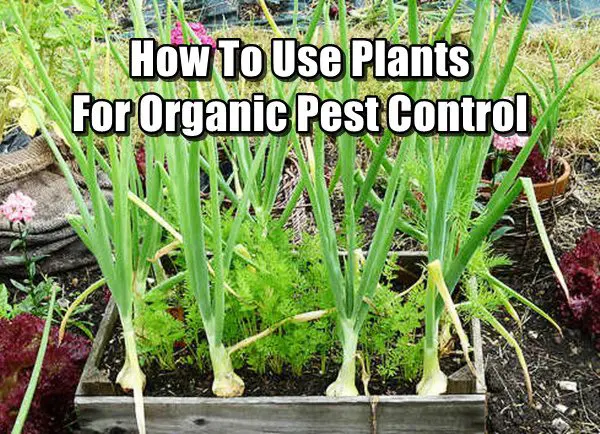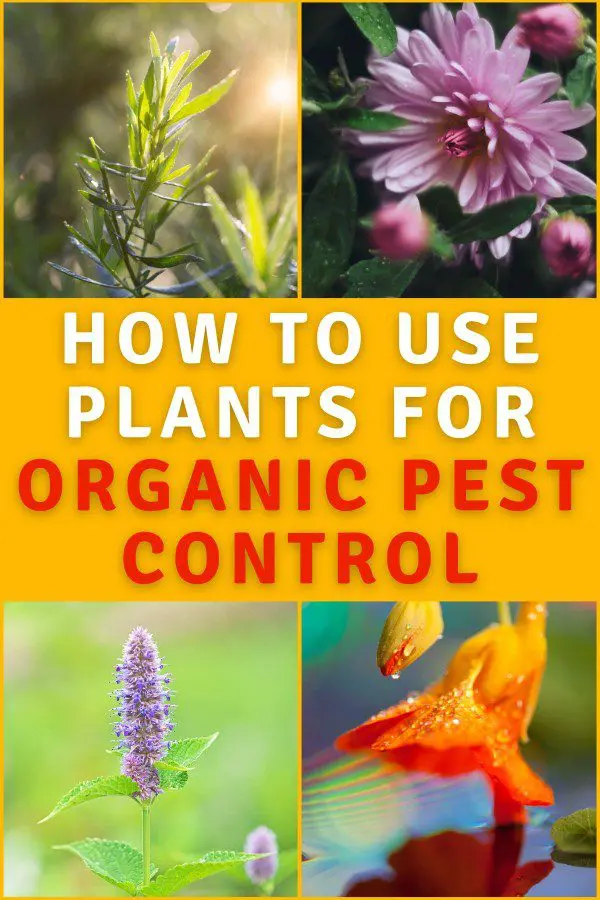If you have ever wanted to grow your vegetables organically, learning how to use plants for organic pest control is a blessing! One of the things you need to do is to select plants for your garden that will help control insect pests.

Certain plants contain properties that either invite beneficial insects or repel harmful insects. Beneficial insects prey on pests that cause damage in the garden. Ladybugs and praying mantis are good examples of beneficial bugs.
Using plants for organic pest control not only cuts down on your workload, but it also reduces or eliminates the number of insecticides that you use in your garden. And fewer insecticides means more good bugs, which in turn means more help in controlling bad bugs. It’s called Companion Planting.
It is important that you experiment to find out what works best for your situation. With this thought in mind, it also helps to choose plants that are native to your area. This way beneficial insects will already know what to look for.
Artemisia
This plant produces a strong antiseptic, although not an unpleasant aroma that repels most insects. Planted as a border, it can also deter small animals like Rabbits and moles.
Basil
The oils in Basil are said to repel thrips, flies, and mosquitoes. I plant basil alongside my tomatoes for larger, tastier tomatoes.
Bee Balm
I love this plant because it attracts bees to my garden. It is another plant that you can grow with your Tomatoes.
Borage
This plant is a real gem in the garden. It repels Tomato hornworms and cabbage worms and attracts beneficial bees and wasps. Borage also adds trace elements to the soil.
Catnip
This plant repels just about everything. You can use it to keep away flea beetles, aphids, Japanese beetles, squash bugs, ants, and weevils.
Chives
Chives are one of my favorite herbs. You can plant Chives to repel Japanese beetles and carrot rust flies. Chives can help prevent scab when planted among apple trees.
Chrysanthemums
When I do use an insecticide I use one made from chrysanthemums called pyrethrum. This all-natural pesticide can help control things like roaches, ticks, silverfish, lice, fleas, bedbugs. Additionally, I like to use it to control ants in certain parts of the garden.
In the garden white flowering chrysanthemums are said to drive away Japanese beetles and C. coccineum, commonly known as Painted Daisy, kills root nematodes.
Dahlias
Dahlias repel nematodes and the blooms are great for adding some color to flower borders and fresh arrangements.
Dill
There is always a place for this plant in my garden. Dill is best planted with Cucumbers and Onions varieties. During the cool season, it can also be planted with Lettuce.
And it’s amazing as a homemade relish!
Dill attracts hoverflies and predatory wasps, and its foliage is used as food by swallowtail butterfly caterpillars. Tomato hornworms are also attracted to Dill, so if you plant it at a distance, you can help draw these destructive insects away from your Tomatoes.
Dill repels aphids and spider mites. Sprinkling Dill leaves on squash plants will also repel squash bugs.
Garlic
In addition to its great taste and health benefits, Garlic planted near roses repels aphids. It also deters codling moths, Japanese beetles, root maggots, snails, and carrot root fly.
When planted alongside Onions, they also deter moles and mice.
Hyssop
This is another one of my favorite plants. Hyssop is great for attracting honeybees to the garden.
Lavender
Lavender is a favorite among many beneficial insects and also repels fleas and moths.
Marigolds
The Marigold is probably the most well-known plant for repelling insects.
French marigolds repel whiteflies and kill bad nematodes. Mexican marigolds offend a host of destructive insects and wild rabbits as well.
If you choose marigolds for your garden they must be scented to work as a repellant. And while this plant drives away many bad bugs, it also attracts spider mites and snails–which are good.
Nasturtiums
I plant Nasturtiums with my Tomatoes and Cucumbers as a way to fight off wooly aphids, whiteflies, Squash bugs, and Cucumber beetles. The flowers, especially the yellow blooming varieties, act as a trap for aphids.
Petunias
They are great to look at and repel Asparagus beetles, leafhoppers, a range of aphids, Tomato worms, and a good many other pests.
Rosemary
Deters Cabbage moth, Bean beetles, and the Carrot fly
Sunflowers
I use Sunflowers as a way to draw aphids away from my other plants. Ants move their colonies onto Sunflowers. The Sunflowers are tough enough that they suffer no damage.
Thyme
Deters cabbage worm.

Leave a comment
You must be logged in to post a comment.